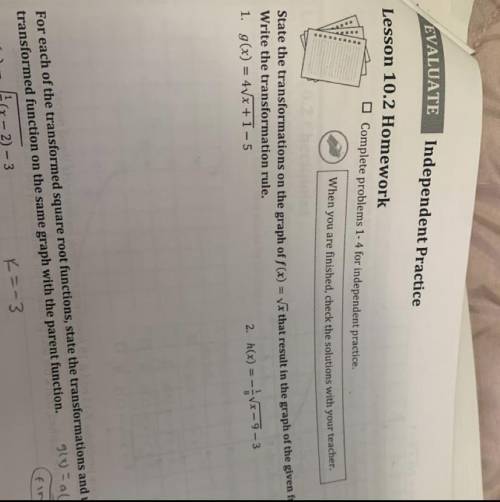
Mathematics, 12.08.2021 14:00 erikagibson3414
State the transformations on the graph of f(x) = x½ that result in the graph of the given functions. Write the transformation rule.


Answers: 1


Other questions on the subject: Mathematics

Mathematics, 22.06.2019 00:50, katlyn10289
Margie is practicing for an upcoming tennis tournament. her first serve is good 20 out of 30 times on average. margie wants to know the estimated probability that her first serve will be good at least four of the next six times she serves. how could she design a simulation for this scenario?
Answers: 3

Mathematics, 22.06.2019 02:00, alexi25jeep
Quadrilateral abcd is a parallelogram with diagonals that intersect at point e. which of the following statements is true?
Answers: 1

Mathematics, 22.06.2019 04:10, elijah4723
Let x have probability generating function gx (s) and let un generating function u(s) of the sequence uo, u1, satisfies p(x > n). show that the (1- s)u(s) = 1 - gx(s), whenever the series defining these generating functions converge.
Answers: 2

Mathematics, 22.06.2019 04:30, desereemariahha
People end up tossing 12% of what they buy at the grocery store. assume this is the true population proportion and that you plan to take a sample survey of 540 grocery shoppers to further investigate their behavior. a. calculate the mean and the standard error for the sample proportion p. b. describe the sampling distribution of p in part a. draw a graph of this probability distribution with its mean and standard deviation. what is the probability that your survey will provide a sample proportion more than 15%? c. d. population proportion? what is the probability that your survey will provide a sample proportion within + 0.03 of the
Answers: 2
You know the right answer?
State the transformations on the graph of f(x) = x½ that result in the graph of the given functions....
Questions in other subjects:







History, 28.06.2019 22:00





